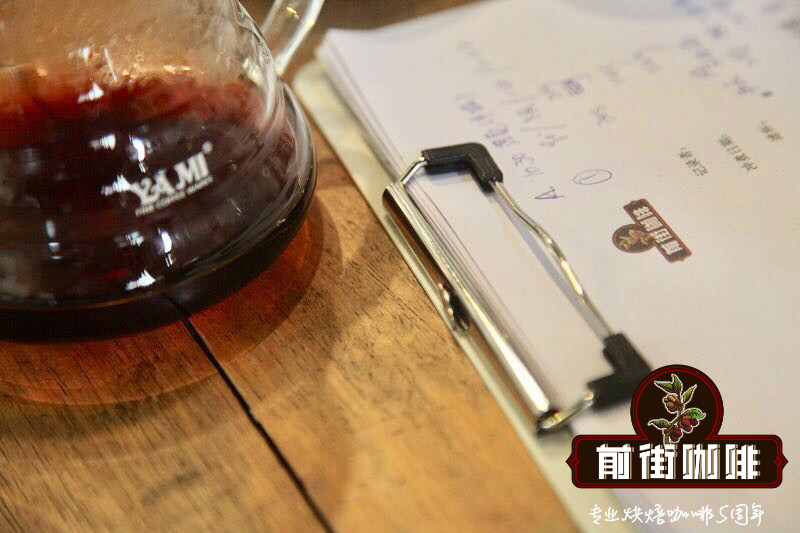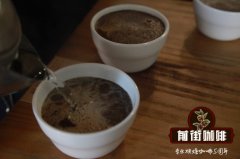What is Venice coffee? Introduction to the characteristic honey treatment of Costa Rican honeybee coffee

Professional coffee knowledge exchange more coffee bean information please follow the coffee workshop (Wechat official account cafe_style)
Located in the province of Punta Renas in south-central Costa rica, SAN VITO, a small town in Golfitori, about 65 kilometers northeast, is surrounded by major mountains at 1600m above sea level. It attracted a large number of Italian immigrants to come here in the early 1950s.
Abejilla Farm has a unique coffee variety in the world-Venecia, which is in the foothills of the Venecia volcano (Volc á n PO á s) north of Costa rica. The Venecia village of San Carlos in Alajuela province was unearthed by a coffee farmer named Isidro Rodriguez, hence the name of Venecia, where it was found, a similar naming to Villa Sarchi.
The Venice seed is a special variety selected from the natural variation of Kaddura (Caturra). In addition to retaining the excellent flavor directly transmitted from the Kaddura seed, the variety screened by this variation has a slower fruit ripening, a delay of 25 to 40 days, and a better tolerance to heavy rainfall, which is also the main reason for its special retention.
Honey treatment is actually a kind of coffee bean processing method, which belongs to semi-dry and semi-wet method. Specifically, it comes from Pulped Natural in Brazil, that is, after the picked coffee fruit is peeled off, the coffee with residual pulp is dried directly with shell beans. In this way, the smell of residual pulp pectin in the drying process will be absorbed by coffee beans, and the processed coffee beans will have more fermented taste and sweetness. And the acidity of the coffee will be reduced.
Of course, Costa Rica, a traditional producer of premium Arabica coffee, has always been famous for its exquisite washing, and it was not until 2003 that a farm tried the Pulped Natural method for the first time. Because the coffee beans processed in this way have a lot of residual pectin and feel as sticky as honey, they are locally known as "honey process" (Spanish Cafe Miel), or "honey treatment"-this is the source of "honey treatment".
Country: Costa Rica
Production area: San Vito
Producer: La Abejilla
Variety: Variedad Venecia
Altitude: 1400m
Treatment: honey treatment
Flavor features: almonds, tea, fruit sweetness, cherry, blackcurrant, caramel, cream.
END
Important Notice :
前街咖啡 FrontStreet Coffee has moved to new addredd:
FrontStreet Coffee Address: 315,Donghua East Road,GuangZhou
Tel:020 38364473
- Prev

What is Pacamara coffee? How should honey handle Pacamara coffee drink?
Professional coffee knowledge exchange more coffee bean information please follow the coffee workshop (Wechat official account cafe_style) Pacamara varieties are not naturally evolved or crossed, but are cultivated by a group of excellent coffee breeders in El Salvador! In 1958, more than half a century ago, the Department of Genetics and breeding of the Salvadoran Coffee Research Center (ISIC) first introduced a variety of bourbon-Pala.
- Next

Introduction to Pink Bourbon Pink Bourbon Coffee Story in Florida Manor, Colombia
Professional coffee knowledge exchange more coffee bean information please follow the coffee workshop (Wechat official account cafe_style) COLOMBIA PINK BOURBON country: Colombia Colombia production area: Huilan-Acevedo Huila-Acevedo Manor name: Florida Manor LA FLORIDA breed: pink bourbon Pink Bourbon altitude: 1650 meters above sea level
Related
- Detailed explanation of Jadeite planting Land in Panamanian Jadeite Manor introduction to the grading system of Jadeite competitive bidding, Red bid, Green bid and Rose Summer
- Story of Coffee planting in Brenka region of Costa Rica Stonehenge Manor anaerobic heavy honey treatment of flavor mouth
- What's on the barrel of Blue Mountain Coffee beans?
- Can American coffee also pull flowers? How to use hot American style to pull out a good-looking pattern?
- Can you make a cold extract with coffee beans? What is the right proportion for cold-extracted coffee formula?
- Indonesian PWN Gold Mandrine Coffee Origin Features Flavor How to Chong? Mandolin coffee is American.
- A brief introduction to the flavor characteristics of Brazilian yellow bourbon coffee beans
- What is the effect of different water quality on the flavor of cold-extracted coffee? What kind of water is best for brewing coffee?
- Why do you think of Rose Summer whenever you mention Panamanian coffee?
- Introduction to the characteristics of authentic blue mountain coffee bean producing areas? What is the CIB Coffee Authority in Jamaica?

